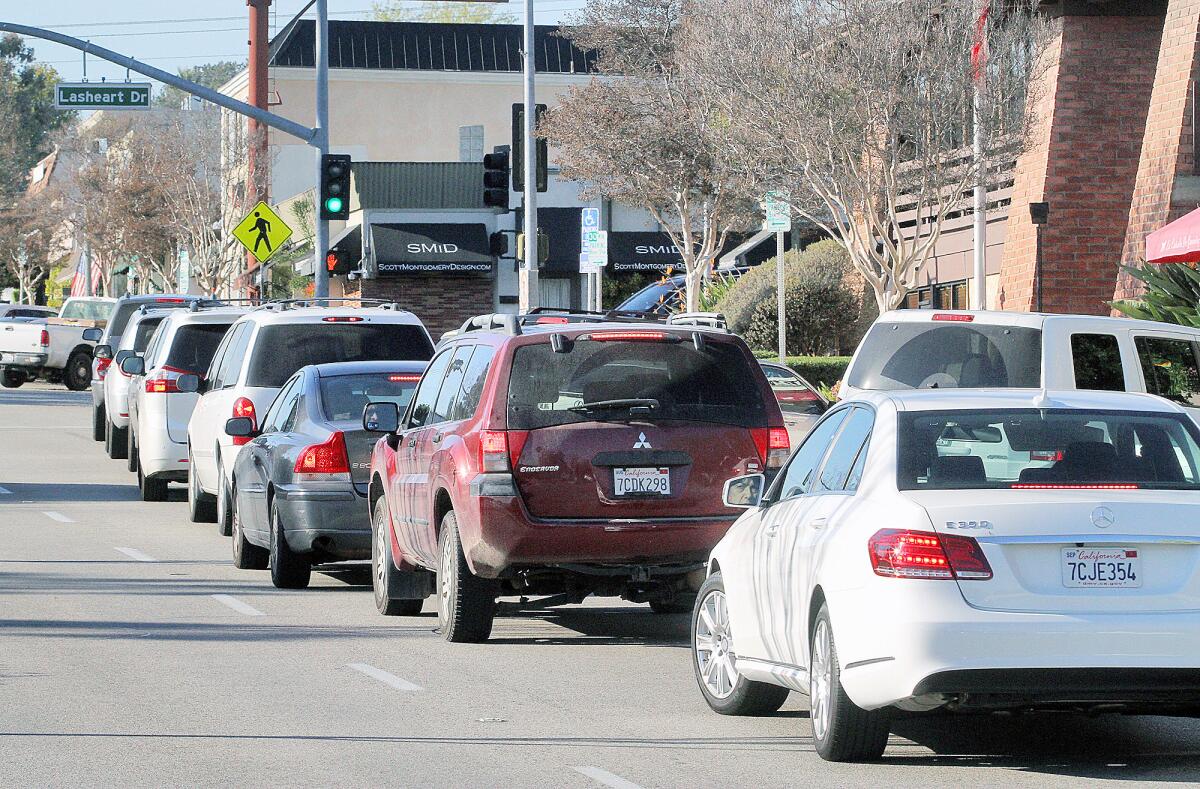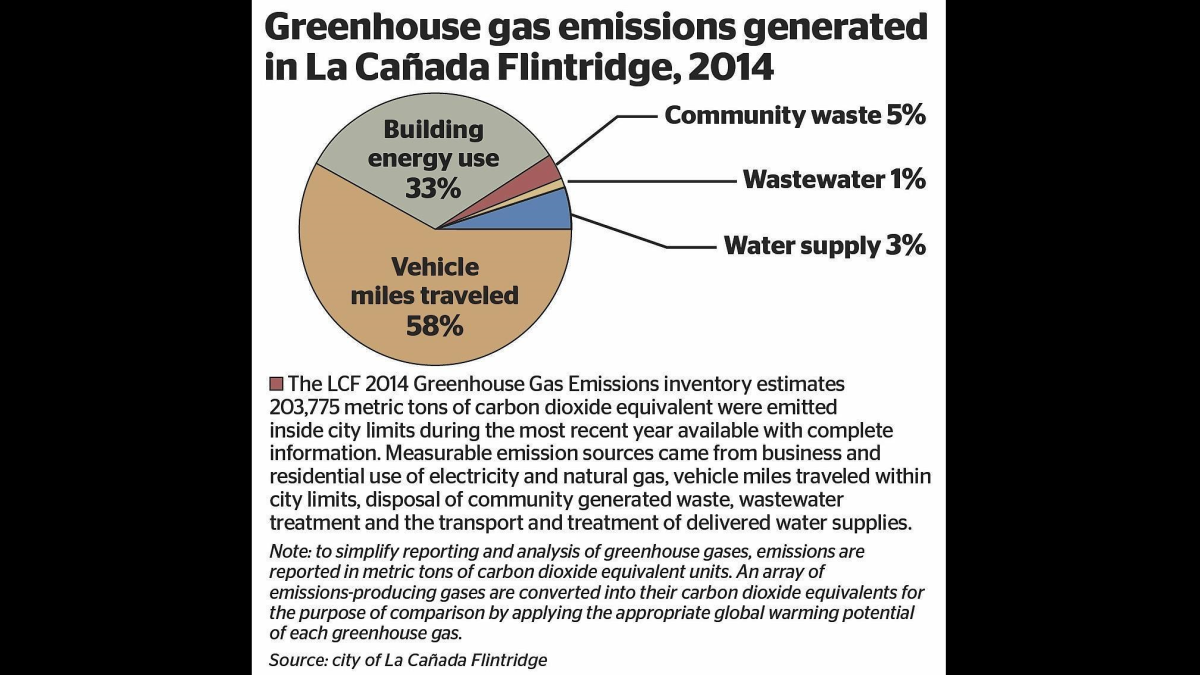Nearly 60% of La Cañada’s greenhouse gas emissions come from cars, per climate report

A lane of cars is stopped in front of La Cañada Flintridge City Hall on Foothill Boulevard on Tuesday, Jan. 26, 2016. More than half of all greenhouse gas emissions in 2014 came from cars driving inside city limits, according to a climate report.
A recently released emissions inventory for La Cañada Flintridge indicates 58% of greenhouse gases emitted in 2014 came from vehicles driving inside city limits, while another 33% resulted from energy used in local homes and businesses.
That, and other information was presented to local residents on March 10 as city staff and consultants examined the “La Cañada Flintridge 2014 Greenhouse Gas Emissions Inventory” and sought input on measures and policies that could help the city stay ahead of state and federal environmental mandates coming down the pike.
NEWSLETTER: Stay up to date with what’s going on in the 818 >>
In the second of a series of monthly public workshops being held to create a citywide Climate Action Plan, locals heard key findings from the newly commissioned report and got a bird’s-eye view of how La Cañada’s direct and indirect emission levels stack up against current and future expectations.
“A Climate Action Plan is just a long-range plan to reduce greenhouse gas emissions from the local community,” explained Christina McAdams of Rincon Consultants, the group advising staff on the plan, thanks to a $75,000 Southern California Assn. of Governments grant.
I think [climate change is] one of the biggest problems facing the world and every little community has to do their part.
— Rhody Stephenson
The inventory shows that in 2014, La Cañadans used approximately 203,775 metric tons (MT) of carbon dioxide equivalent (CO2e). Different greenhouse gases were converted into their carbon dioxide equivalents so figures could be presented in a single unit.
More than half of those emissions, about 117,592 MT, came from vehicle trips beginning or ending inside the city, while emissions resulting from the use of electricity and natural gas in commercial and residential sectors accounted for about 33%.
The inventory also counted greenhouse gases created by the operation of city government. In that case, public lighting amounted to 34% of the 238 MT emitted in 2014. City-owned facilities accounted for 23%, while another 24% resulted from the collective commutes of city employees.
Vehicle travel on the Foothill (210) Freeway was not included in the local emissions report, as freeways are regulated at a level beyond La Cañada’s jurisdiction. Instead, only trips originating or ending in the city were included, consultants said.
Now that the inventory has been presented to the public, residents will be asked in a third meeting on April 7 to help list and review strategies that may be employed to reduce emissions further.
“The ultimate goal is to get those measures from the community for things that can be done,” McAdams told the small audience attending the March 10 meeting.
Resident Carol Caley was there with a list of environmental concerns, including the city’s multiple-trash-hauler policy, 210 Freeway traffic and cars unnecessarily idling in school pick-up lines. JPLer Beth Fabinsky suggested the city might use California native plants in its medians, and educate residents about how their daily habits can negatively affect the environment.

Rhody Stephenson, a member of the national nonprofit Citizens’ Climate Lobby, was at the meeting to learn more and share a few ideas of his own.
“I’m a big climate-change person,” Stephenson said. “I think it’s one of the biggest problems facing the world and every little community has to do their part.”
So far, factoring in local initiatives as well as state and federal laws aimed at lowering emissions, La Cañada’s citywide emissions rate has fallen about 30% since levels measured in 2007, McAdams said. That rate should continue to decline to about 141,509 MT of CO2e in 2035 — roughly 13% higher than what California’s projected targets will demand at that time.
Ideas gathered now with the public’s input could help close that gap on the city’s own terms, McAdams said.
“The motivation is to demonstrate consistency with state goals,” she said. “If (cities) can do it on their own, they can do it the way they want to.”
--
A formal list of measures to possibly reduce greenhouse gas emissions will be discussed at a third public workshop on April 7 at 6 p.m. in City Hall Council Chambers, 1327 Foothill Blvd. The draft Climate Action Plan created in the workshopping process will be brought before the La Cañada Flintridge Planning Commission in May, before heading to the La Cañada Flintridge City Council in June.
Anyone unable to attend the meetings in person may direct comments and questions to Christina McAdams at [email protected]. For more information, call Deputy Director of Community Development Susan Koleda at (818) 790-8881. Documents can be viewed online at www.lcf.ca.gov/planning/climate-action-plan.
--
Sara Cardine, [email protected]
Twitter: @SaraCardine
--
ALSO:
Teachers press for salary increase
Second public workshop on emissions scheduled at LCF City Hall
